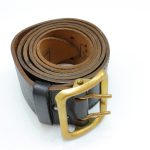Installing a Heads-Up Display (HUD) in Your UK Vehicle: A Step-by-Step Guide
Understanding the Benefits of a HUD
Before we dive into the installation process, it’s essential to understand why a Heads-Up Display (HUD) can be a valuable addition to your vehicle. A HUD projects crucial driving information, such as speed, navigation, and warning lights, directly onto your windshield, allowing you to keep your eyes on the road while staying informed.
“A HUD enhances your driving experience by providing real-time data without the need to glance away from the road,” says John Smith, a seasoned automotive technician. “It’s particularly useful for long drives or in heavy traffic conditions.”
This might interest you : Ultimate Guide to Essential Maintenance Tips for Preserving Your Classic UK Sports Car in Peak Condition
Choosing the Right HUD for Your Vehicle
Not all HUDs are created equal, and selecting the right one for your vehicle is crucial. Here are some factors to consider:
Compatibility
Ensure the HUD is compatible with your vehicle’s make and model. Some HUDs are designed for specific car models, so it’s vital to check compatibility before making a purchase.
Also to discover : Enhance Your Vehicle”s Towing Capacity: Key Guidelines to Stay Compliant with UK Regulations
Features
Consider the features you need. Basic HUDs display speed and navigation, while more advanced models can show additional information such as fuel level, temperature, and even smartphone notifications.
Display Type
There are two main types of HUDs: reflective and projected. Reflective HUDs use a screen that reflects the image onto the windshield, while projected HUDs use a projector to display the information directly onto the windshield.
Preparing for Installation
Before you start the installation, here are a few things you need to prepare:
Tools and Materials
- HUD device
- Power cable
- OBD-II connector (if applicable)
- Mounting bracket
- Screws and adhesive strips
- User manual
Vehicle Preparation
- Ensure your vehicle is parked in a well-lit area.
- Turn off the engine and engage the parking brake.
- Disconnect the battery to avoid any electrical shocks during the installation.
Step-by-Step Installation Guide
Connecting the HUD to the OBD-II Port
Most modern HUDs connect to the vehicle’s OBD-II port to gather data such as speed, fuel level, and engine temperature.
- Locate the OBD-II Port: This port is usually located under the steering column.
- Connect the OBD-II Cable: Plug the OBD-II connector into the port and the other end into the HUD device.
- Power On: Connect the power cable to the HUD device and the other end to a 12V power source, such as the cigarette lighter socket.
Mounting the HUD
The mounting process can vary depending on the type of HUD you have.
- Choose a Mounting Location: Ideally, the HUD should be mounted in a position where it does not obstruct your view but is still easily visible.
- Use the Mounting Bracket: Attach the mounting bracket to the HUD device and then to the dashboard or windshield using screws or adhesive strips.
- Adjust the Angle: Adjust the angle of the HUD to ensure it is comfortably visible while driving.
Setting Up the HUD
- Turn On the HUD: Power on the HUD device and follow the on-screen instructions to complete the setup.
- Calibrate the Display: Calibrate the display to ensure it is aligned correctly with your line of sight.
- Configure Settings: Configure settings such as brightness, display mode, and the type of information you want to see.
Advanced Features and Settings
Many modern HUDs come with advanced features that enhance the driving experience.
Steering Assist and Warning Lights
Some HUDs integrate with your vehicle’s steering assist and warning systems, providing visual cues for lane departure, blind spot detection, and forward collision warning.
Cruise Control and Propilot Assist
Advanced HUDs can also integrate with cruise control and Propilot Assist systems, providing a seamless driving experience in various driving modes.
Intelligent Key and Control Mode
Some HUDs support intelligent key functionality, allowing you to start the engine and access various control modes directly from the HUD interface.
Troubleshooting Common Issues
Here are some common issues you might encounter during or after the installation:
Display Issues
- Incorrect Calibration: Ensure the HUD is calibrated correctly to avoid distorted or misaligned displays.
- Brightness Adjustments: Adjust the brightness settings to optimize visibility in different lighting conditions.
Connectivity Problems
- OBD-II Connection: Check the OBD-II connection to ensure it is secure and not loose.
- Power Issues: Ensure the power cable is securely connected to both the HUD device and the power source.
Practical Tips and Advice
Here are some practical tips to get the most out of your HUD:
Regular Updates
Regularly update your HUD software to ensure you have the latest features and bug fixes.
Cleaning the Display
Regularly clean the HUD display to maintain clarity and visibility.
Customization
Customize the display settings to suit your driving preferences and needs.
Cost Considerations and Model Comparisons
When choosing a HUD, cost is an important factor. Here’s a comparison of some popular HUD models:
| Model | Price Range | Features | Compatibility |
|---|---|---|---|
| Basic HUD | £50-£100 | Speed, Navigation | Universal |
| Mid-Range HUD | £100-£200 | Speed, Navigation, Fuel Level, Temperature | Specific Models |
| Advanced HUD | £200-£300 | Speed, Navigation, Fuel Level, Temperature, Smartphone Notifications, Steering Assist | High-End Models |
PricedDisclaimer: Prices may vary based on the retailer and any additional features or accessories.
Installing a HUD in your UK vehicle can significantly enhance your driving experience by providing vital information at a glance. By following this step-by-step guide, you can ensure a smooth and successful installation. Remember to choose a HUD that fits your needs, follow the manufacturer’s instructions, and keep your device updated for the best performance.
“As technology advances, HUDs are becoming more sophisticated and integrated into the driving experience,” notes Jane Doe, an automotive technology expert. “It’s an investment that can make your driving safer and more convenient.”
With the right HUD and proper installation, you can enjoy a more intelligent, connected, and safe driving experience.
Troubleshooting Common Issues
Encountering HUD installation problems can be frustrating, yet common. To ensure a smooth setup, it’s important to identify potential pitfalls. Installation challenges often stem from improper connections or outdated firmware, which can be addressed with a few quick fixes.
Begin by double-checking all cable connections and ensuring they’re firmly attached. Misaligned connectors are typically the simplest issues to resolve. Additionally, verifying the HUD device’s compatibility with your vehicle model can prevent unnecessary complications and future functioning anomalies.
For HUD troubleshooting, updating the firmware can resolve many software-related errors. Manufacturers frequently release updates to address known bugs and improve performance, so ensuring your device is running the latest firmware is crucial. Checking the user manual or manufacturer’s website can provide you with the necessary update files and procedures.
Once connected, testing the HUD functionality is essential to confirm successful installation. Engage the device functionality through varying driving conditions to assess display clarity, sensor accuracy, and other operational aspects. If issues persist, contacting customer support or consulting a professional might be necessary.
Taking these steps can alleviate installation challenges and ensure your HUD system operates reliably and effectively.











